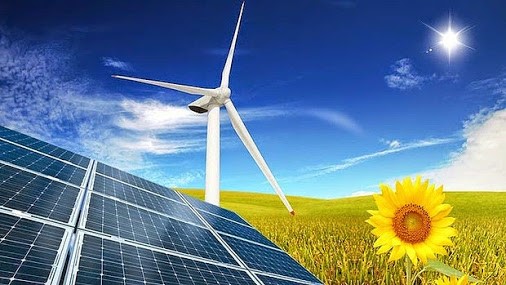We all like to think we play a part, even in some small way, in keeping the world a cleaner, greener place, but when we switch on a light or turn on a gas stove, how many of us really know where our energy comes from let alone whether it’s renewable or not? These days, most energy providers offer eco-friendly tariffs to help us make the ‘right’ choice for our planet, but the availability of recyclable and renewable fuels depends largely upon where in the world you live.
The EIA (Energy Information Administration), a US-run body that provides independently researched statistics into worldwide energy usage, states that only around 10% of the world’s energy provision currently comes from renewable sources. Their happier forecast is that before the middle of the 21st Century that figure will have improved to around 35%. So, which countries have got it right? The results are largely surprising, because out of the top five countries that have started to make real changes towards using renewable energy, only three are members of the G20 (the body that actively supports worldwide issues including environmental causes).
Sitting in first place is the United States of America which accounts for around a quarter of the world’s total consumption of renewable energy. That might sound like a lot, but although they’ve made a definite effort to embrace cleaner energy sources, they remain one of the biggest consumers of traditional energy supplies as well. Second place goes to Germany, who hit the headlines by announcing they plan to completely phase out their use of nuclear power in favour of greener options. They bravely set their target date for the biggest switch-off in nuclear power history as 2022, giving them a mere ten years to complete the task.
Vying for third and fourth place are Spain and China, where an increase in wind power is helping their environmental plans take off. For a couple of years now, China has focused on building wind farms in the flat inland plains that surround many of its most densely populated conurbations. As well as erecting an army of windmills, they’re focusing heavily on the power grid itself, while aiming to strengthen their existing system to withstand the additional strain it’ll soon be feeling. In Spain, wind farms are appearing across the country, while the skills of their experienced constructors are being sought abroad. In fact, the majority of electricity produced in Spain comes almost entirely from wind farms, although the country still relies heavily on imported energy to make up the shortfall.
Bringing up the rear of this top five is Brazil, where solar energy is the main focus. With the eyes of the world upon them for the World Cup 2014, all venues are set to be powered by renewable energy harnessed from the power of the sun. It’s a bold move, and backing up their plans are the existing wind farms that already provide a sizeable amount of the country’s electricity.
Many of these changes are driven by consumer demand as the average customer becomes more aware of the impact their personal choices have on supply. We might not all live in one of these top five countries, where renewable energy is emerging at the forefront of everyday living, but with long-term plans for change high on everyone’s agenda it’s clear the rest of the world is hurrying to catch up.
